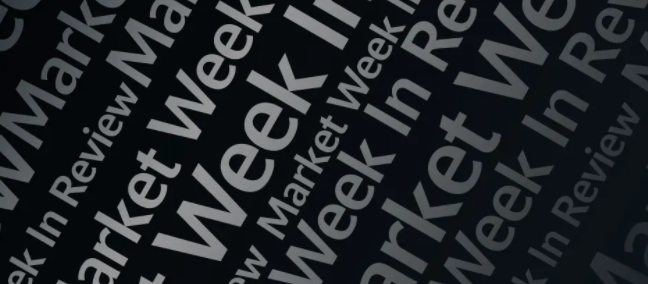U.S. Inflation Is Declining. So Why Did The Fed Raise Rates?

Video Length: 00:08:12
On the latest edition of Market Week in Review, Chief Investment Strategist Erik Ristuben and Sophie Antal-Gilbert, Head of AIS Portfolio & Business Consulting, discussed U.S. Federal Reserve (Fed) policy amid the central bank’s ongoing fight to tame inflation. They also chatted about the disappointing economic growth numbers in China and reviewed the second-quarter GDP (gross domestic product) number for the U.S.
Why did the Fed lift borrowing costs again?
Antal-Gilbert and Ristuben opened the segment by reviewing the Fed’s latest rate increase, which lifted borrowing costs to a target range of 5.25%-5.5%—the highest level in 22 years. Ristuben noted that the rate hike was expected, adding that the slightly hawkish tone in the central bank’s statement also wasn’t too surprising. “The Fed has been very clear all along that it views inflation as the number-one foe to the U.S. economy. As my colleague BeiChen Lin pointed out, just like overcooked chicken is better for your health than undercooked chicken, in the Fed’s eyes, overcooked monetary policy is preferable to undercooked monetary policy that doesn’t go far enough in corralling inflation,” he remarked.
Case-in-point: While inflation is continuing to slow, as evidenced by June’s CPI (consumer price index) reading of 4.8%, consumer prices still remain far above the Fed’s target range of 2%, Ristuben said. In addition, the latest reading from the Atlanta Fed’s wage tracker shows that wage inflation is running at 5.6%—a number far too high for the central bank’s liking, he remarked.
“The bottom line here is that the U.S. labor market is still overheated. In order for the Fed to be confident that it’s bringing inflation under control, wage growth is going to have to slow further. This probably means that the unemployment rate will have to rise notably higher—perhaps to around 4.5%,” Ristuben stated.
Ultimately, Fed leaders want to ensure that inflation is trending in the right direction and that it’s nearing its target range of 2%, he said. Part of the reason for this is that the central bank has seen instances in the past where inflation has declined a bit before rising again, Ristuben noted, pointing to former Fed Chair Paul Volcker’s experience in the late 1970s and early 1980s. “The Fed wants to be doubly certain that it’s slaying the inflationary dragon this time around,” he concluded.
Key takeaways from China’s Politburo meeting
Turning to China, Antal-Gilbert noted that the latest GDP (gross domestic product) numbers from the world’s second-largest economy came in softer than anticipated. “China’s post-COVID recovery has certainly been disappointing—and nothing at all like what most Western countries experienced once restrictions were lifted,” Ristuben remarked.
He said that the economy was one of the main discussion points at China’s recent Politburo meeting, with the government pledging more in the way of stimulative economic policies. One especially significant change was the removal of the phrase “housing is for living, not for speculation.” This wording had been included in statements since 2019, Ristuben noted.
“I think the omission of this phrase illustrates that the Politburo is beginning to understand that if it doesn’t take steps to bolster China’s struggling property sector, consumer confidence is going to remain weak.China wants its economy to be driven primarily by consumption, but right now, Chinese consumers are hesitant due to the lack of stability in the housing market,” he explained.
To help the country’s property market recover, Ristuben thinks that the Chinese government will probably start removing some purchasing restrictions soon on a city-by-city basis. He noted that similar to many other nations, the housing market in China accounts for roughly 20% of GDP—meaning that an increase in housing demand could provide a boost to economic growth.
U.S. GDP grows at 2.4% clip amid strength in services sector
Antal-Gilbert and Ristuben finished by reviewing the U.S. GDP number for the second quarter. Ristuben said that GDP grew at a 2.4% annualized pace—up from a 2.0% reading in the first quarter. The Q2 reading topped consensus expectations, he noted, characterizing it as a good, solid number. The number isn’t entirely shocking, Ristuben said, because the U.S. services sector has been expanding for the past several months. “The services sector makes up 77% of the U.S. economy, so when it’s doing well, the economy usually is too,” he explained. Ristuben added that the latest flash PMI (purchasing managers’ index) for the U.S. manufacturing sector strengthened during June, nearing expansion territory.
He concluded by noting that the July jobs report will be a key watchpoint coming up as investors digest the strength of the U.S. labor market. “If there are signs of softening in the services sector—for instance, around hiring—that could be a signal to the Fed that some of the heat might be starting to come out of the jobs market,” he said.
More By This Author:
July 2023 Equity Market Outlook: Positive Sentiment Emerges As Inflation Slows
Allegory Of The Summer Barbecue: Analysis On The Stance Of Fed Policy And The Likely Path Forward
Key Themes From The Early Days Of U.S. Q2 Earnings Season
Disclosure: These views are subject to change at any time based upon market or other conditions and are current as of the date at the top of the page. The information, analysis, and opinions ...
more


